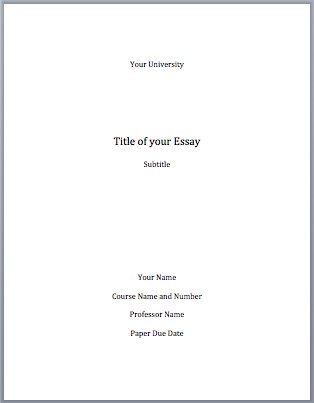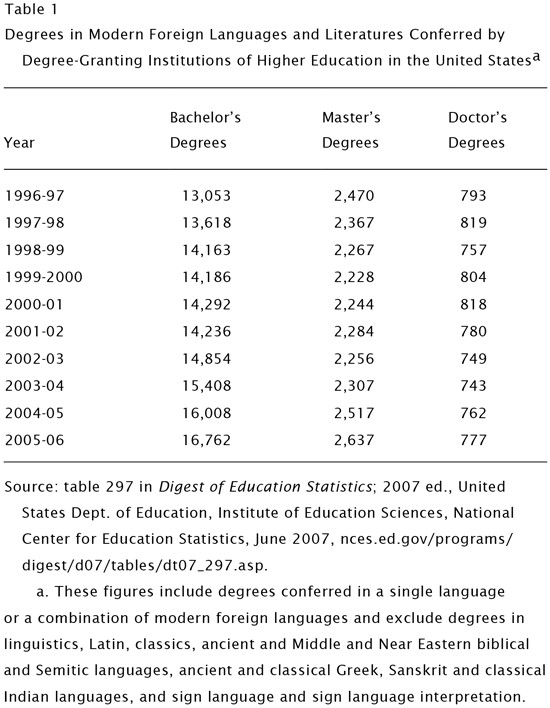MLA Style Citation Format
MLA (Modern Language Association) is one of the several standard formatting styles recommended for academic work. By formatting and citing the paper in a uniform manner, the reader is better able to identify and understand the various types of sources that were used for the paper. In addition, beyond being able to understand the citations, the reader can look through the sources themselves. While using a formatting style such as MLA can be tedious and time-consuming, professors take it very seriously. In fact, failure to correctly format the paper often makes a difference in the paper’s final grade.
Given its importance, the general guidelines for citing and formatting a paper based on MLA recommendations can be found below.
Additional help with formatting and writing a paper can be found here:
How to do MLA Format Properly
In-text Citation
Whenever you use an outside source for your paper, you will either quote the material directly or paraphrase. Direct quotes involve taking material from a source and writing it verbatim into your paper. It should be written in quotation marks. A paraphrase, on the other hand, involves taking material from other sources and expressing it in your own words. Whether you are using direct quotes or paraphrasing information from someone’s works, they both require proper attribution. In both cases, you would include an in-text citation MLA within the body of your project. An MLA in-text citation should look as follows:
“Direct quote” or paraphrase (author’s last name followed by page number)
A recent study concluded that “exposure to violent media content leads to aggressive behavior”
(Patterson 26).
Although MLA does not require a cover page, professors often want their students to include one because it makes the paper look more organized and professional. Professors will generally provide guidelines for how they would prefer the cover page to look. Here is how to do it in proper MLA style:
- Use double-spacing and centered characters.
- Include the name of your college or university one inch from the top of the paper.
- Around one-third down the page, type the title of your paper and if necessary the subtitle below it.
- Hit return several times and type your name, the course title and number, the name of your professor/instructor, and the due date of your assignment.
This best plagiarism software review will help you choose the most reliable one to check your paper for plagiarism.
MLA Format Header

In MLA format, the header simply consists of your last name and the page number. (Note that this is distinguished from the APA header, which by contrast features the title of the paper and page number).
It should be placed on the right hand side and set at ½ inch from the top of the paper. The content of the paper should be set at one-inch margins from all sides; top, bottom, left and right.
MLA Font Guidelines
In this format, your paper should be 12 pt font size using a legible font style. Times New Roman is the most common font style used, although Arial is also acceptable. Ultimately it depends on your instructor’s preferences.
Bibliography Page
Your list of cited sources should be placed on a separate page following the end of your paper. The centered title should always be called Work Cited in italics and never use terms like “References,” “Bibliography” or “Sources.” The entries should be in alphabetical order based on the author’s last name. Do not use spaces and other punctuation with the names. If the author’s name is unknown, use the title instead, keeping it alphabetized and omitting any A, an, or The.
Regarding dates, you will spell out the names of the months in the in-text citations, but abbreviate them on the Work Cited page with the exception of May, June, and July. Whether you choose to go by month-day-year (i.e., Aug 31, 1996) or the day-month-year (31 Aug 1996) is up to you, although the former is generally expected in U.S. colleges and universities while the latter is common everywhere else. Either way, make sure to be consistent. Note that a comma is used if applying month-day-year whereas it is omitted when using day-month-year.
Underlining versus italics
Once upon a time before computers became the universal method for writing papers, typewriters were the standard. But since there was no way to print italics, names of publications were underlined. As a rule, if you are still using a typewriter or are writing the bibliography by hand (although professors do not usually allow this) you would still want to underline. Of course, if you are firmly planted in the 21st century like most people and use a computer, always use italics for publication names. In any event, ask your professor/instructor when in doubt. Our examples use italics.
Read also: How to make MLA format bibliography?
Hanging Indents
In MLA formatting, the citations should include hanging indents in which the first line of an entry is flush left, and all of the remaining lines should be indented ½ inches.
Capitalization, Abbreviation, and Punctuation
When to capitalize, abbreviate, and punctuate
Unlike other formats, MLA guidelines require the use of title case capitalization. The first words, last words and all principal words – including those that follow hyphens in compound words – should be capitalized. When identifying different elements of the work (i.e., vol. for volume, ed. for editor) type the abbreviations in lowercase except when these designations follow a period. With publisher’s names, abbreviations should generally be used as well (i.e., Penguin for Penguin Publishing).
The author, title, and publication information should be separated with a period and a single space. Colons and a space should be used when separating the title from a subtitle. Use other types of punctuation only if it is included in the title of the work. Quotation marks should be used when making reference to short works within a larger collection of works. (i.e., “First Day of School.” Tales of Youth.) Quotation marks should also be used for titles of articles/stories/songs that are unpublished.
Tables and Illustrations
Try to put tables and illustrations as near to the corresponding text as possible. A table should be labeled Table, numbered, and titled. A table and title should be capitalized and placed flush left on separate lines above the table. The source of the information provided in the table should be identified directly below the table, along with any additional notes. In order to distinguish notes to the text and notes to the table, notes related to the table should be assigned a lower case letter as opposed to numbers. Use double-spacing and dividing lines when necessary. An example is illustrated below.
MLA Format Examples
Books
Format:
Author’s last name, first name. Book title. Additional information. City of publication: Publishing company, publication date.
Examples:
Alberts, Jacob T. Life on the Range. Chicago :American History Association, 1998
Blake, Kimberly A. Penguins of the South Pole : Flightless Birds of Magic. Los Angeles : Penguin, 2005.
Hirchak, Oksana Y. 1001 Jokes To Never Share With Friends. London : Pennington, 2017.
Pumpkins, David S. A Guide to Spooky Elevator Rides. New York : Wacky, 2016.
Vale, Sally. Sugar. Ed. Spencer B. Boykins. New York : Thompson, 1994.
Encyclopedias and Dictionaries
Format:
Author’s last name, first name. “Title of Article.” Title of Encyclopedia. Date.
Note: If the dictionary or encyclopedia articles are organized alphabetically, you can exclude volume and page numbers.
Examples:
“Antidisestablishmentarianism.” Oxford Dictionary. 15th ed. 2009.
Jenkins, Henry Robert, Jr. “The Soviet Union.” Encyclopedia Dramatica. 1986.
Jones, Jane. “Churchill, Winston.” Encyclopedia Blahblahblahca. 2009 ed.
Magazines and Articles
Format:
Author’s last name, first name. “Article title.” Periodical title Volume # Date: inclusive pages.
Examples:
Bamgardner, Kevin. “Penguins Invade Small Russian Town.” Los Angeles Times. 12 June 2011: sec. B: 1
Draber, George. “Why You Should Visit China.” China Tourism. 2 Dec. 1997: 25-28.
Feeley, Brian. “A Guide To Eating Toothpaste.” Dental Delicacies. 21 Feb. 2013: 11-16.
Sandberg, Marvin. “The Sun Didn’t Rise Yesterday, Leaving Scientists Puzzled.” Chicago Tribune. 8 Jan. 2005, late ed.:G2+
Websites and Web pages
Format:
Author’s last name, first name (if mentioned). “Title of work within a project or database.” Title of site, project, or database. Editor (if mentioned). Electronic publication information (Date of publication or of the most current update, and name of any sponsoring institution or organization). Date of access and <full URL>.
Note: If you are unable to find all of this information, cite whatever is available.
Examples:
Bompkins, Jason. “Dolphin speaks English.” Amazing Animal News. 6 Sep. 2011. 10 Oct. 2012 <http://animalnews.com/dolphinspeaks/index.htlm>.
Danger, Richard. “Fun with Pickles.” The Comprehensive Guide to Cucumbers. Ed. Dale Schwind. 1985. Main Lib., U of Iowa. 11 Feb. 2001 <http://etext.lib.uiowa.edu/subjects/afam.html>
Elvin, Barbara. “Are We All Just Spooky Ghosts?” Supernatural Magazine 15 June 1999 <http://www.supernatural.com/article/2852.asp>.
Ferth, Patrick. Homepage. 20 Mar. 2004. 11 May 2005 <http://www.chass.utoronto.ca:8080 /~patferth/>.






